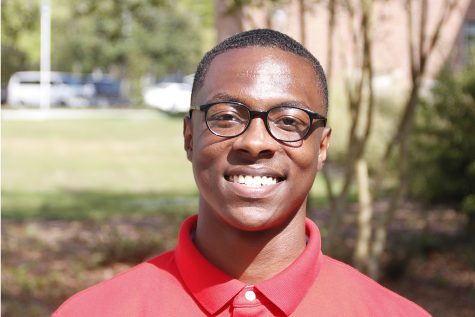
Science on Tap was introduced to the university in 2013 to bring science to the Hammond community and to give scientists at the university a platform to exhibit their findings.
“Southeastern is illustrious for engineering technology and business management,” said Professor of Biological Sciences Brian Crother. “Therefore, the creation of Science on Tap was a creative way to give the science professors credit for the work they’ve done.”
The name derived from a church called Faith on Tap located in Ponchatoula. This month’s Science on Tap presenter was Instructor of Biological Sciences Dr. Demetra Kandalepas who discussed was named “Hidden Fungi-Plant’s Secret to Success.”
The event took place at Tope La Catering on March 6 at 7 p.m. 2013 alumnus Derek Jones expressed why he came out to his second Science on Tap.
“I merely came for the act,” said Jones. “This is my second time coming, and the first presentation I attended was about frogs and salamanders. Drinking booze, relaxing and learning is a good combination.”
Crother shared his first time encountering fungi after taking a trip to the tropical Caribbean.
“I had been in the Caribbean for two weeks, and I remember having fungi stuck on my ankle, and it was my buddy for the next two days,” said Crother. “Also, my friend was shaving one day, and when he washed the shaving cream off, he noticed a white spot on the side of his face. When he went to wipe it off, he realized that it wasn’t going away. He had a mushroom growing on his face.”
Kandalepas started her presentation with a picture of the Salem Witch Trials in 1691. She explained the reason for showing the audience pictures of four females being hung in Salem Village.
“There were young girls going into compulsions and having a burning sensation, just burning all over,” said Kandalepas. “They were falling on the floor and twitching all over the place, very crazy. So, the fingers were being pointed at women that were interacting with these girls. These girls were from Haiti and talked a lot about voodoo, so when these girls started having symptoms, naturally the finger was pointed to these women that knew about witchcraft. 19 to 20 women were hung, and four men were accused of being warlocks, so they were crushed to death with rocks.”
Kandalepas shared how fungi contributed to this occurrence.
“Fast-forward 100 years at the University of Santa Barbara, a graduate student started putting things together because she just happened to know about the symptoms a particular fungi caused,” said Kandalepas. “This piece of history intrigued her, so one of the projects she worked on was what went on in Salem in 1692-1693. What she discovered was the conditions around that time were perfect for rye grass to grow, and a particular fungus was prevalent during this time. A very long, very cold winter followed by a warm and wet spring fostered this prevalence of this fungus. Everyone in the village ate on average one and a half pounds of rye grass, but only 19 women had symptoms. Very unfortunate.”
Kandalepas transitioned to talking about everyday fungi and how it affects people.
“Who thinks that fungi is what you see, for example a mushroom?” asked Kandalepas. “That is not the fungi. The body of the fungi is called mycelium, and it is mostly underground with webbing like hyphae. Fungi is the largest and oldest organism with an age of 8,000 years old and covers 300,000 acres of the Oregon forest.”
Kandalepas offered her concluding remarks.
“Fungi affect us humans more than any other species, and without fungi, some trees would only grow two feet in height,” said Kandalepas. “Remember not to touch white mushrooms. Don’t touch any mushrooms.”


